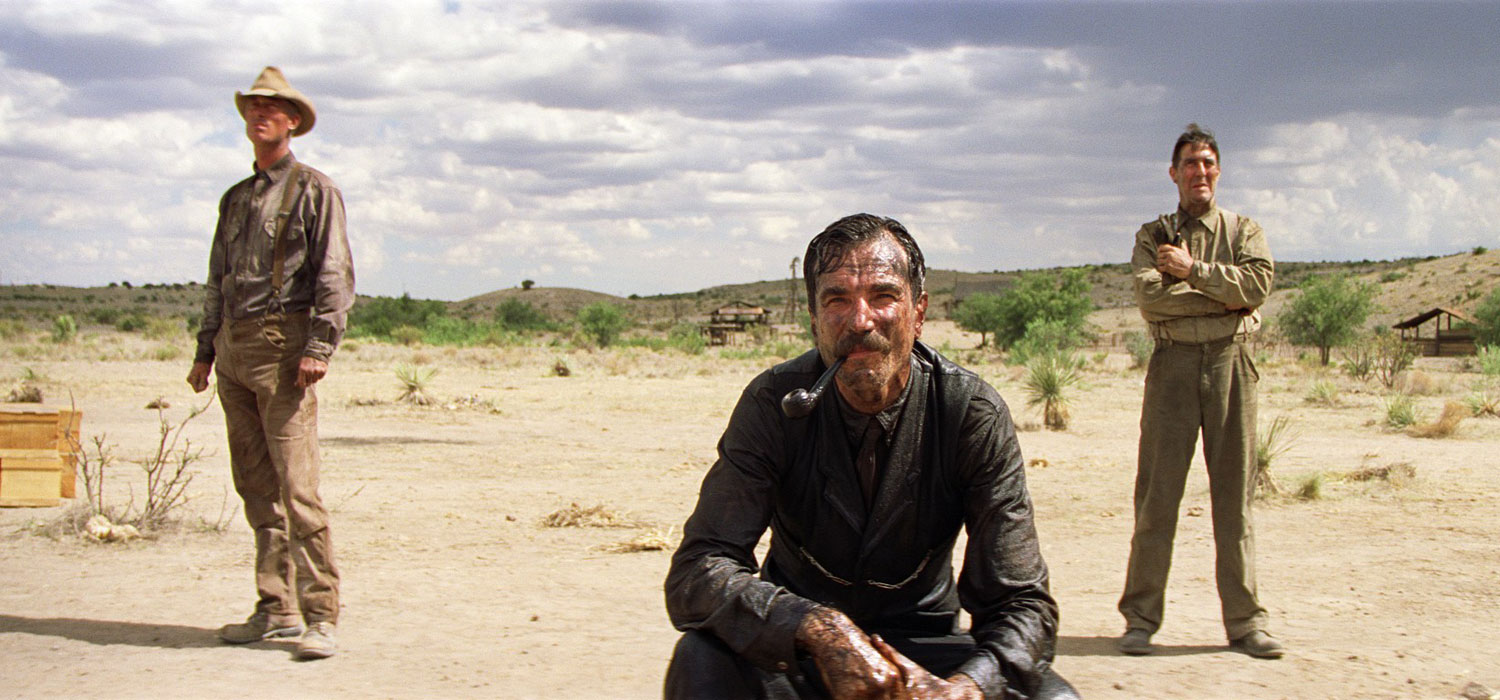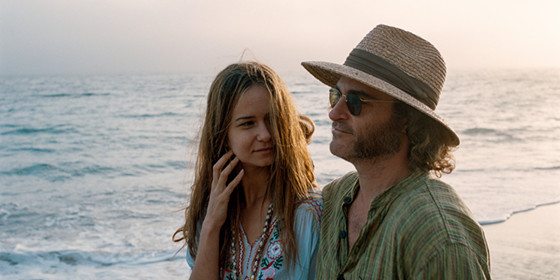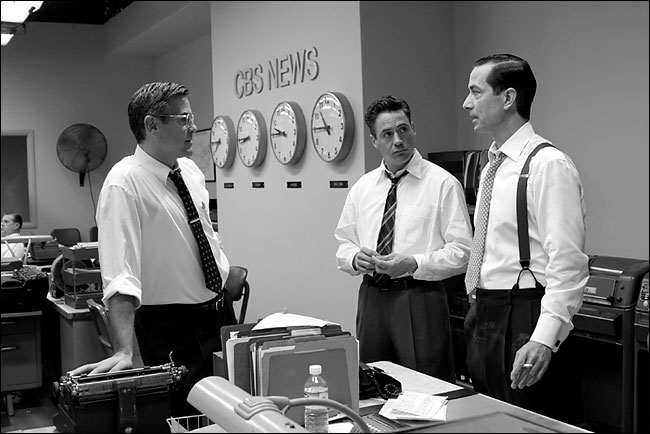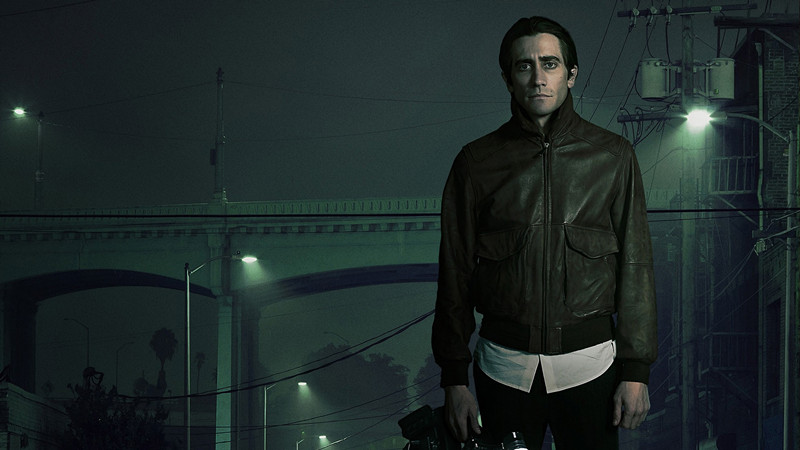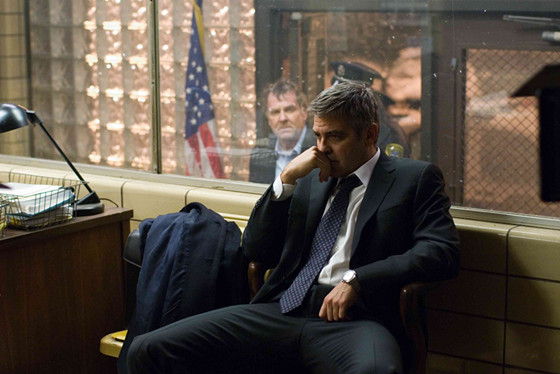Robert Elswit is unquestionably one of the most versatile cinematographers currently shooting major motion pictures. With incredible ease, he’s able to shift from gargantuan action pictures like the two most recent Mission: Impossible entries to something smaller and more personal like the edgy indie Nightcrawler. He’s been working in the industry for 35 years, and for over the last 20, he’s compiled a list of credits that’s nothing short of remarkable.
Elswit has served as the longtime cameraman for critically acclaimed filmmaker Paul Thomas Anderson (there’s only one film they didn’t collaborate on), and it’s in this distinct relationship that a true artist-to-artist connection has been forged between these two terrific talents.
Throughout the years, Elswit has dipped his hands into a multitude of genres and styles, having worked with an eclectic group of filmmakers ranging from Tony Gilroy (multiple times), Dan Gilroy, George Clooney, David Mamet (multiple times), Martin Brest, Stephen Gaghan (multiple times), Brad Bird, Christopher McQuarrie, Curtis Hanson, and Joel Schumacher, to name just a bunch.
He won the Academy Award for Best Cinematography for his striking work on the 2007 epic There Will Be Blood, and is a consistent contender for the Oscar every single year. Here’s a list of his 10 best efforts to date.
10. Inherent Vice (Paul Thomas Anderson, 2014)
The sweet stench and hazy after-effects of marijuana can be found all over Anderson’s hysterical, bewildering, utterly zonked-out shaggy-dog detective movie Inherent Vice, and the freewheeling and earthy cinematography that Elswit incorporated into this film helped to firmly root this film in a cinematic universe that felt different and surreal and constantly morphing. This film didn’t make a splash with general audiences and it’s not all that hard to guess why.
Based on Thomas Pynchon’s novel, this is a spacey, ridiculous, totally original work that has “cult-classic” status written all over it. Different and yet similar to obvious inspirations such as The Big Lebowski, The Big Sleep, and The Long Goodbye, Inherent Vice is going to anger a lot of people looking for easily identifiable plot points and then it’s going to be groovy for many others who are willing to accept the notion that this film is all about the journey, not necessarily the destination.
You’ve also got to be interested in watching a perpetually stoned, mostly lackadaisical, and potentially hallucinating lead character (Joaquin Phoenix in a spectacular comedic performance with hints of somber melancholy) that can’t seem to get out of his own way.
Elswit, yet again, seemed totally in tune with Anderson’s demands as a filmmaker, and it’s crafty how they gave the final film some scratches and a purposefully weathered look, dialing up the grain and draining most of the brightness out of any primary color that was seen in frame. Inherent Vice looks and feels as if it were actually shot in the 60’s or 70’s, which had to have been the aesthetic aim for Elswit and his team of intrepid contributors.
9. Magnolia (Paul Thomas Anderson, 1999)
Anderson’s sprawling sense of narrative was perfectly matched by Elswit’s total mastery of the widescreen aspect ratio in Magnolia, a film that feels wholly cinematic, existing in its own hermetically sealed universe, a world that looks and sounds pretty much like our own, but contains a surreal, heightened atmosphere that was made possibly expressly because of how well Elswit understands light, framing, and overall composition.
The stedicam work in this film is extraordinary, with one shot in particular ranking as one of the greatest of all time – the scene where child prodigy Stanley Spector (Jeremy Blackman) is being escorted by his domineering father and stressed out show coordinator through the bowels of the TV studio.
In this long, unbroken piece of virtuoso filmmaking, the audience leans not only about two very important characters, but comes into contact with a variety of peripheral individuals, while providing an fascinating look at the behind-the-scenes machinations of a game-show.
The shot also starts outside, in the rain, and then moves inside, further upping the technical demands of the crew, which resulted in something truly unifying from a filmmaking perspective; it’s one of the ultimate “show-off” shots that adds something to the narrative instead of just being style for style’s sake.
All throughout Magnolia the audience is treated to Elswit’s subtle sense of style (the bit with the camera staying locked in place in the kitchen with Melora Walters and John C. Reilly entering and exiting frame is a delight) which never overpowers the story; his camera seemed at-one with all of the actors and it’s because Anderson and Elswit are so in touch with one another as collaborators that this film feels uniquely organic in a way that few other films ever achieve.
8. Good Night, and Good Luck (George Clooney, 2005)
Cinematographers must jump at the chance to shoot in black and white, and Elswit’s gloriously beautiful work in the monochromatic format on Clooney’s journalism drama Good Night, And Good Luck is beyond a pleasure to take in.
The film recounts the period in which Senator Joseph McCarthy began his absurd quest to expose Communists in America, while CBS News icon Edward R. Murrow (the elegant David Strathairn) dedicated himself to highlighting the indecencies being perpetrated by McCarthy’s crooked Senate “investigation.”
Clooney’s film discussed morals and ethics, both on the journalistic and human side of life, and by shooting in black and white, Elswit was able to convey simple truths of good vs. evil, and correct vs. wrong. The smoky atmosphere made up of the constant sight of lit cigarettes adds ambience and texture to the old-fashioned yet still slightly heightened images.
There’s an intimacy to the images in this film, with the 1.85:1 aspect ratio used smartly and efficiently; Elswit always understands the importance of utilizing the space within the frame regardless of how wide he shoots any given film.
The agile and varied aesthetics in Good Night, And Good Luck perfectly mixed with the old-school black-and-white lensing, and when combined with the vintage 16mm news material which showcased McCarthy and other real life members from this exciting chapter of American History, a sense of almost surreal verisimilitude is achieved.
As usual, when a production looks and feels as realistic as this one did (the TV-set detail and period appropriate studio/camera equipment is remarkable) it’s that much easier for the cameraman to create a distinct and believable visual atmosphere. It’s no surprise that Elswit was nominated for an Oscar for this evocative piece of work.
7. Nightcrawler (Dan Gilroy, 2014)
Unnerving. Unforeseeable. Unforgettable. Writer/director Gilroy’s thrillingly caustic media satire Nightcrawler shows some seriously vicious teeth, taking you on a dark and twisted trip through nocturnal Los Angeles, all shot in 2.35:1 Michael Mann/Nic Refn-vision by Elswit, who took a page out of the neo-noir handbook and jacked his images with a stunning sense of vitality and edge.
The totally intense imagery paired perfectly with James Newton Howard’s synth-heavy score, which pounds away in the background, buffering all of the transgressive behavior.
Jake Gyllenhaal was utterly brilliant as Lou Bloom, a diseased creature of the night, appearing in virtually every scene, completely live-wire, spewing rapid fire dialogue with sociopathic glee, evoking shades of Travis Bickle in his portrayal of a freelance videographer hustling from crime scene to crime scene trying to sell his exploitive footage to the highest buyer.
Original movies from a single voice seem less and less common these days, and as Nightcrawler races through its propulsive and lurid narrative, you begin to realize that you’re watching something that’s playing by its own sick and cynical set of rules, unafraid to peek at the nastiness that’s running through our cities, news outlets, and members of society.
And most of the edginess of the film can be directly traced to Gilroy’s sinister intentions, and the estimable skill of Elswit as cinematographer; Nightcrawler feels, in many ways, like a companion piece to Mann’s Collateral, presenting a sexy, dangerous, extremely stylish nocturnal vision of Los Angeles that’s all sodium-vapor street lamps and neon-jazzed excitement. This is an instant classic that defies narrative and stylistic expectations at almost every single moment.
6. Michael Clayton (Tony Gilroy, 2007)
Michael Clayton rests on whether or not the titular character, so generously portrayed by George Clooney, will come to the aid of his friend or feed him to the wolves. Michael is a curious character. A divorced father and sloppy investor (the restaurant he backed with his cop-brother is going belly-up), he’s just the sort of conflicted anti-hero made famous by a slew of 70’s movies (The Parallax View and Three Days of the Condor come to mind as immediate inspirations) that audiences don’t get to see anymore.
He’s a good but troubled guy, not the slickster you might expect with an actor like Clooney in the role, and his intentions are never simple. And it’s because of the way that Elswit shrouded him in darkness and somber atmospherics that we get the sense that this is a man who has ice running through his veins.
Director Gilroy dialed it back a notch in this low-tech but high-minded dramatic thriller, and it’s the rare genre piece that uses words instead of bullets to shoot down its characters, as the juiciest scenes in this talky film are when smart people in business suits confront one another and tear each other apart with top-flight vocab words.
Elswit brought a richly detailed aesthetic to Michael Clayton, never overstuffing his imagery, but allowing the desolation of an open field or the confines of a downtown office building to speak just as loud as any of the tack-sharp dialogue. This is a specific but never cluttered looking movie, all browns and grays and blacks, with the de-saturated color palette working wonders with the chilly New England setting.
Gilroy and Elswit had fun subverting the general expectations of a studio thriller with this classy and retro-feeling effort, with the sly, no-frills directorial style never needlessly ramping up the action or making it any more sensationalistic than it needs to be. Sure, there’s a “car chase”, if you want to call it that, but it’s the most cerebral car chase you’re likely to see, with Elswit stressing paranoia and unease through choice shot selection and careful pacing.
When someone gets murdered in this film, the camera catches the action in a clinical fashion, draining the moment of any sense of humanity, showing the act being carried out in a cold, calculated, and genuinely creepy fashion; it’s more a chilling to see a life get taken in this fashion because of how direct Elswit and Gilroy were with their stylistic choices.
